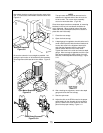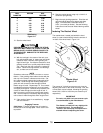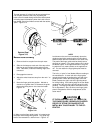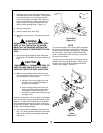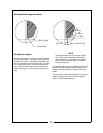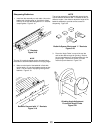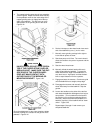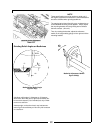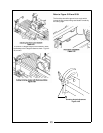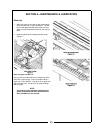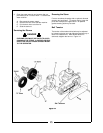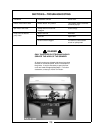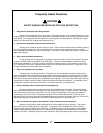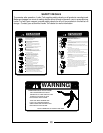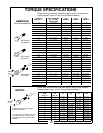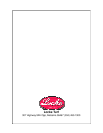
Frequently Asked Questions
SAFETY SHIELDS ARE INSTALLED FOR YOUR PROTECTION.
1. Why does the sharpener have safety shields?
Grinding stones frequently chip or even shatter, injuring the operator of an unshielded sharpener. Also,
in spin grinding, an unshielded rotating reel presents a considerable hazard to loose clothing, fingers, hands and
other objects. The rotating reel can also break free if a bearing fails a shaft break free if a bearing fails, a shaft
breaks or a blade weld fails, sending metal fragments flying.
2. Why does the sharpener have the water/coolant mix?
Grinding reels creates an extreme amount of dust. There are documented cases of operators suffering
injury from inhaling grinding dust. Also, the water/coolant mix helps cool the edges being ground. A blade,
when subjected to excessive heat, may lose its temper. The result is a softer metal and a quicker wearing of the
edges while mowing.
3. Why is there a variable speed drive?
In spin grinding reels, the peripheral or tip speed of the reel blades in relation to the speed of the grind-
ing stone is directly related to the quality of the finish grind. Therefore, variable speed on these drive motors
allows proper adjustment. Consult the chart for the diameter reel being ground. Some makes of reel mowers
(e.g., Ransomes, John Deere, Jacobsen Greens King) have both right and left hand drive. Having a drive mo-
tor which facilitates driving from either side is necessary.
4. Why is the sharpener built so heavy?
Grinding reels is a precision operation. The guide rails, reel and bedknife brackets and grinder sup-
ports must be built soundly and solidly to keep the grinder stone moving parallel to the spinning reel or finished
grind on a bedknife. This sharpener’s base weighs over five hundred (500) pounds and the guide rails are set
permanently into the frame, parallel and not adjustable by the operator. The heavy construction helps insure the
components are solidly mounted, unlikely to become misaligned through frame twisting. It is important to level
the sharpener and bolt it permanently to the floor. This helps insure true, accurate grinding.
5. Why are brackets used to attach units into the sharpener?
We use brackets that bolt into the same place as the bedknife shoe if available. Using these attach-
ment points means that the reel us being ground in the same relationship as it is used in the field. Other sharp-
eners, which use rollers and/or axles to hold a reel unit, introduce the potential of inaccurate grinding due to
worn bearings in the roller of axle. Misalignment between rollers and axles with the reel’s axles may occur.
Mounting the reel unit at the points where the bedknife attaches means that the operator need only concern him-
self with adjusting the reel parallel to the movement of the grinding wheel on the guide bars.
6. Why is it necessary to grind a new bedknife? Hasn’t it been ground at the factory?
Bedknives are ground to certain specifications at various stages of their construction. They also un-
dergo stress which will frequently bow or twist them. Furthermore, even new bedknives should always be
mounted to their particular shoe prior to sharpening. If a bedknife style will not allow grinding, some bedbars
must be surfaced before attaching the knives. In some cases a light twisting of the bedknife as it is forced to
conform to the shoe. Sharpening must occur after mounting or the straight edge will be lost due to this twisting.
CAUTION
27



